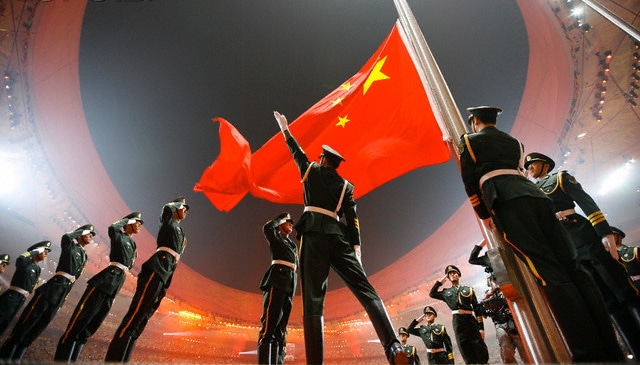
Shanghai was the only port to accept Jews fleeing the Holocaust without an entry visa. Between 1933 and 1941, Shanghai unconditionally accepted over 30,000 Jewish refugees from Europe.
[ Wikipedia, “Resistance during the Holocaust” ]
Approval of China’s leadership is nearly twice as high in Asia and Middle East than in Europe and the Americas, according to a 2008 Gallup Poll.
[ Gallup, “China's Leadership Better Regarded Outside the West” April 29, 2008]
From 1980 to 2010, China was one of the “most improved” countries on the UN’s annual Human Development Index (HDI), helped largely by rapid GDP growth.
[ UN; The Economist online, “Developing Humans” Nov. 4th 2010 ]
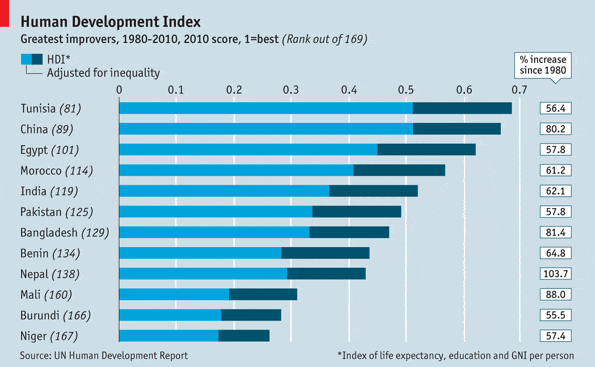
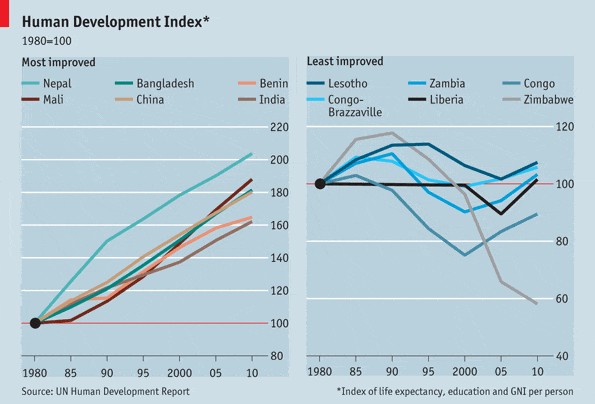
A new five-year plan adopted at the annual session of the National People’s Congress (NPC) has been hailed as a blueprint for a “happy China”. “Increasing happiness, officials now insist, is more important than increasing GDP….Officials now often talk of setting up “happiness indices” by which government performance should be judged.”
[ The Economist “Don't worry, be happy” March 17, 2011 ]
In 2010, 87% of Chinese said they were satisfied with the way things were going in their country, according to the Pew Research Center’s Global Attitudes Project. This compared to only 28% of Egyptians polled, which “suggests China may not be ripe for the kind of uprisings seen throughout the Middle East.”
[Pew Research “Upbeat Chinese May Not Be Primed for a Jasmine Revolution” March 31, 2011 ]
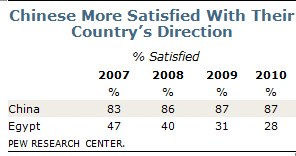
Senior Chinese politicians are “addicted” to dyeing their hair black. They generally only allow their hair to turn white after they retire (or if they’re sent to jail).
[R. McGregor, “The Party: The Secret World of China's Communist Rulers” 2010 ]
About 50 of China’s most powerful men have a red phone—called the “red machine”—on their desks. The encrypted phones use only four digits and only connect to other red phones.
[R. McGregor, “The Party: The Secret World of China's Communist Rulers” 2010 ]
In 2003, China became only the third country (after Russia and the U.S.) to launch a manned spaceflight. China also launched a lunar orbiter in 2007 and may send a manned mission to the moon by 2020.
[ Wikipedia “Space exploration”; National Geographic ]
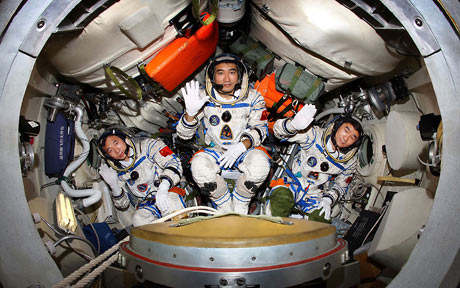
China facts: MILITARY INVESTMENT & CAPABILITY
China has 3,455,000 total soldiers, or about 150% more soldiers than the U.S.
[ Wikipedia “List of countries by number of troops” ]
China has the world’s largest military, with 2.28 million active personnel and another 800,000 in reserve. By comparison, the U.S. has less than 1.5 million active and about 860,000 reserve personnel.
[ Wikipedia “List of countries by number of troops” ]
China’s published 2011 military budget has jumped to around US$91.5 billion, making it second largest in the world. That represents an increase of 7.5% over 2010 spending, after double-digit jumps in previous years.
[ BBC “China says it will boost its defence budget in 2011” March 4, 2011; Wikipedia “Military budget of the People's Republic of China” ]
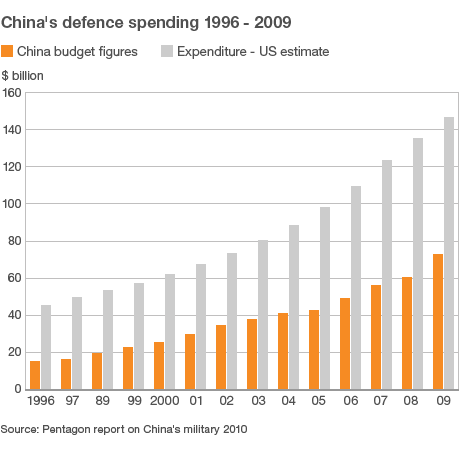
According to the Pentagon, China has “the most active land-based ballistic- and cruise-missile program in the world”. China has invested heavily in the strength and technical sophistication of its missiles, which are a “good value”—costing about US$1 million—when compared to an aircraft-carrier, which cost about $15 billion-20 billion.
[ The Economist online, “China’s Missiles” Dec. 6, 2010 ]
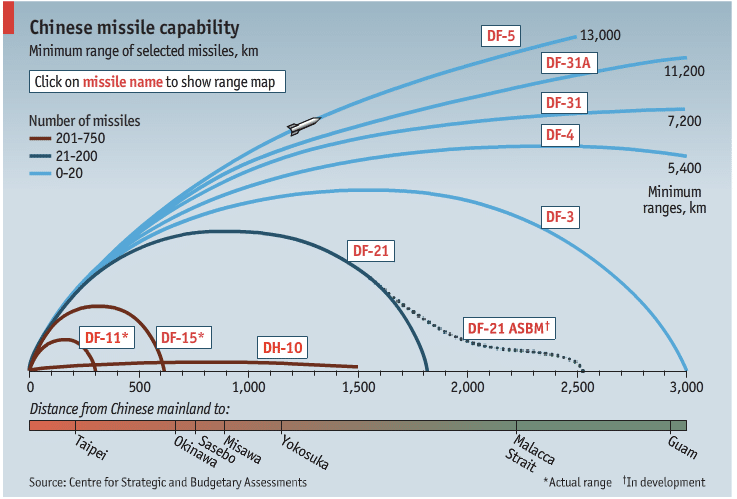
China has developed a stealth jet fighter. The Chinese military conducted its first test flight of the J-20 during U.S. Defense Secretary Robert Gates visit to Beijing in January 2011. Gates acknowledged that China’s military had outpaced US intelligence estimates, saying that it “clearly [has] potential to put some of our capabilities at risk”.
[ The Guardian UK, “China confirms stealth fighter jet tests” Jan. 11, 2011; The Wall Street Journal “A Chinese Stealth Challenge?" Jan. 5, 2011 ]
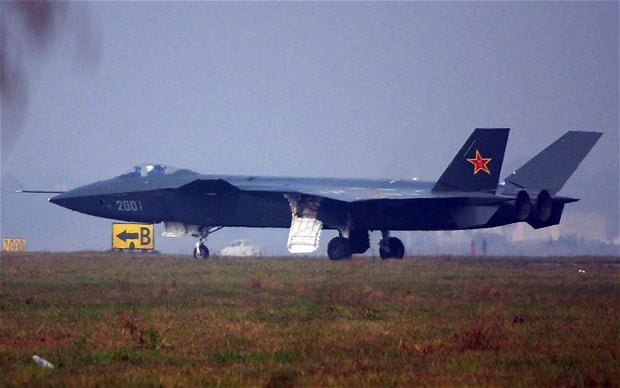
One consequence of China’s “relentless military upgrading” is that “the balance of power across the Taiwan Strait is gradually changing in favour of the PLA”. This modernization program includes the development of anti-satellite and cyber-war capabilities, as well as the J-20 (“a new combat aircraft with some ‘stealth’ characteristics”) and “the build-up of the PLA Air Force’s inventory of multirole Sukhoi 30s, together with in-flight refuelling tanker and AWACS aircraft” which are “already significantly strengthening China’s air capability”.
[ IISS Report “The Military Balance 2011” ]
CHINA’S GROWING NAVAL POWER
Chinese military is seeking to project naval power to waters that the U.S. Navy has long dominated— from the oil ports of the Middle East to the shipping lanes of the Pacific, according to U.S. military officials. China’s new “far sea defense” strategy and “the speed with which it is building long-range capabilities has surprised foreign military officials.” Adm. Robert F. Willard—the leader of the United States Pacific Command—described the developments to Congress as “pretty dramatic.”
[ The New York Times “Chinese Military Seeks to Extend Its Naval Power” April 23, 2010 ]
China’s military now has more warships than the U.S., which has long possessed the biggest fleet, according to the International Institute for Strategic Studies (IISS).
[IISS Report “The Military Balance 2010”; The Economist online “Naval Gazing” Sept. 1, 2010 ]
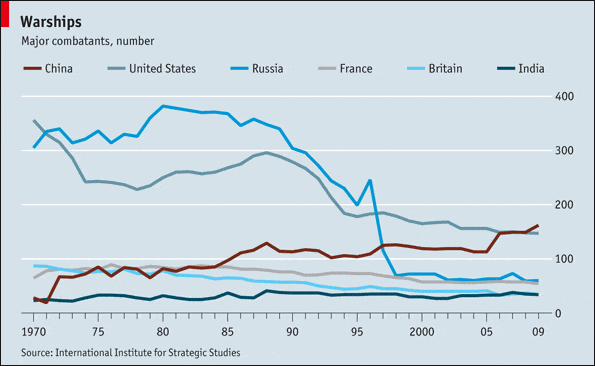
China has started building aircraft carriers, according to China’s State Oceanic Administration. The first aircraft carrier is targeted for completion by 2014 and a nuclear powered carrier is reportedly slated by 2020.
[ Wired Mag “Is China (Finally) Building an Aircraft Carrier?” Dec. 17, 2010; Financial Times “China reveals aircraft carrier plans” Dec. 17, 2010 ]
China’s development of submarine and anti-ship missiles are particularly worrying to the U.S. According to a 2011 report by the International Institute for Strategic Studies (IISS): “While media attention has focused on China’s aircraft-carrier plans, the PLA Navy’s submarine programme, its new landing platform docks and its deployment of more effective anti-ship missiles hold greater strategic significance.”
[ IISS Report “The Military Balance 2011” ]
China is deploying a new anti-ship ballistic missile that can sink U.S. aircraft carriers. Four-star Admiral Robert F. Willard, commander of the U.S. Pacific Command, says that the capability should be viewed in “combination (with China’s) integrated air-defense systems; advanced naval systems, such as the submarine; advanced ballistic-missile systems, such as the anti-ship ballistic missile, as well as power-projection systems into the region.”
[ The Washington Times “China has carrier-killer missile, U.S. admiral says” Dec 27, 2010 ]
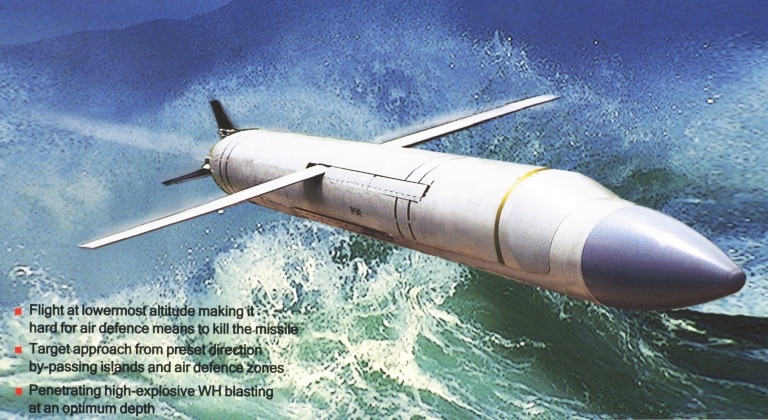
The U.S. military “has no reliable countermeasures” for China’s “fiercest anti-ship missile” (called the Sizzler by NATO). The missile—capable of crippling an aircraft carrier— “can reach farther and fly faster than the West’s top anti-ship missiles…(and) can be launched from submarines even when submerged.” China is redesigning the missile to dive from space to travel at about two kilometers per second.
[ Newsweek “China’s Carrier Killers” Oct. 4, 2010; Wikipedia “Anti-ship missile” ]
The U.S. Navy’s top officer isn’t sweating China’s sea power yet. Admiral Gary Roughead signaled that he doesn’t think the Chinese can rapidly develop new weapons systems that can compete with the U.S.’s capabilities. “As you get into higher-end capability, I am not so sure that the rate of acceleration is the same,” he said to the Financial Times. “When you start moving into higher-end capabilities, the incremental improvements are harder, more costly and more complex.”
[Wired Mag “U.S. Navy Chief Isn’t Sweating China’s Sea Power” Jan. 19, 2011 ]
CHINA’S ASYMMETRIC WARFARE:
China’s true “game-changing capabilities” are more likely to be in the area of laser blasts, cyber-attacks and “counter-space capabilities,” according Vice Adm. Jack Dorsett, chief of Naval intelligence. “That’s a greater concern from me than some of the other hardware-driven or kinetic capabilities that they’re developing.”
[ Wired Mag. “Navy Intel Chief Yawns at China’s New Jet, Missile” Jan. 5, 2011 ]
In 2006, China secretly fired powerful laser weapons to blind US satellites. The Pentagon reported that China could blind American satellites with a ground-based laser firing a beam of light to prevent spy photography as they pass over China and “could make them useless over Chinese territory”.
[ Telegraph UK “Beijing secretly fires lasers to disable US satellites” Sept. 26, 2006 ]
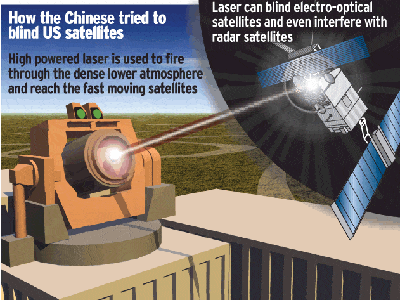
China may have a secret anti-satellite laser site in the mountains of Xinjiang province.
[ Wired Mag. “Is This China’s Anti-Satellite Laser Weapon Site?” Nov. 3, 2009 ]
In 2007, China conducted a satellite-killing test in space, sparking concerns by the Pentagon and around the world about the “militarization of space”. Using a ground-based medium-range ballistic missile, the test shot down an old Chinese weather satellite about 537 miles (860 kilometers) in space.
[Wikipedia “2007 Chinese anti-satellite missile test”; BBC News “China confirms satellite downed” Jan. 23, 2007 ]
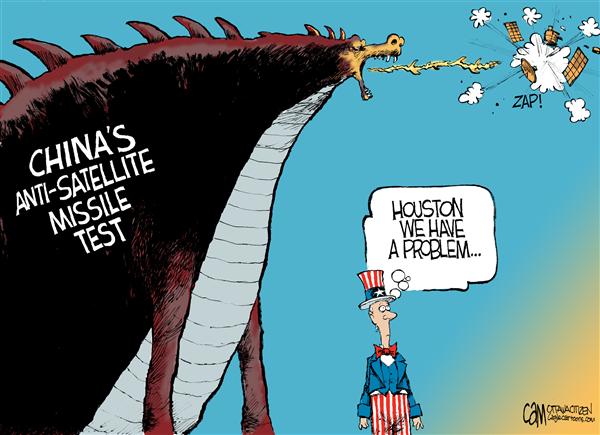
In 2009, a top China air force commander has called the militarization of space an “historical inevitability”. “As far as the revolution in military affairs is concerned, the competition between military forces is moving towards outer space,” Xu Qiliang said in an interview, “this is a historical inevitability and a development that cannot be turned back.”
[ Telegraph UK “Space arms race inevitable says Chinese commander” Nov. 2, 2009 ]
In 2010, China launched two “secret satellite(s)” into orbit, which are “either a sign of China’s increasingly-sophisticated space program — or a sign of its increasingly sophisticated space warfare program.” “The Chinese would be absolutely incompetent to not be trying to reduce U.S advantage in space,” says James Oberg, a former NASA space engineer specializing in orbital rendezvous. “No potential adversary in their right mind would give us permanent advantage in space operations.”
[Wired Mag. “China’s Secret Satellite Rendezvous ‘Suggestive of a Military Program’” Aug. 31, 2010 ]
China’s growing capabilities in cyber-warfare and intelligence gathering are a “formidable concern” to the United States, according to James Clapper, Director of National Intelligence. He told a Senate panel: “The Chinese have made a substantial investment in this area, they have a very large organization devoted to it and they’re pretty aggressive.”
[ Reuters “China's cyber abilities worry U.S.: spy chief” March 10, 2011 ]
The U.S. fears that China is plotting cyber warfare by recruiting top hackers, according to 2010 WikiLeaks cables. According to leaked cables from the State Department: “”There is a strong possibility the PRC [People's Republic of China] is harvesting the talents of its private sector in order to bolster offensive and defensive computer network operations capabilities”.
[ The Guardian UK “WikiLeaks cables reveal fears over Chinese cyber warfare” Dec. 4, 2010 ]
The U.S. government has been the target of cyber intrusions aimed to steal military secrets that appear to have originated in China, according to the Pentagon’s report to Congress on Chinese military capabilities. China’s military has “established information-warfare units to develop viruses to attack computer systems of its adversaries…The ability to conduct cyber attacks fits within China’s broader goal of conducting asymmetric warfare to exploit weaknesses in stronger enemies like the U.S. “
[The Wall Street Journal “U.S. Sounds Alarm at China's Military Buildup” Aug. 15, 2010 ]
On April 8, 2010, “massive volumes” of U.S. and other foreign Internet traffic was re-routed through Chinese servers for 17 minutes—apparently by state-owned China Telecom. In a Senate panel, Director of National Intelligence James Clapper said that the incident “affected traffic to and from U.S. government and military sites, including sites for the Senate, the Army, the Navy, the Marine corps, the air force, and the office of the Secretary of Defense, as well as a number of Fortune 500 firms”.
[ Reuters “China's cyber abilities worry U.S.: spy chief” March 10, 2011 ]
China facts: CORRUPTION:
China ranked as the #78 least corrupt country in the world (out of 178 countries), according to Transparency International’s 2010 Corruption Perceptions Index (CPI). The top three least corrupt were Denmark (#1), New Zealand (#2), and Singapore (#3). The U.S. was ranked #22.
[Transparency International's 2010 Corruption Perceptions Index ]
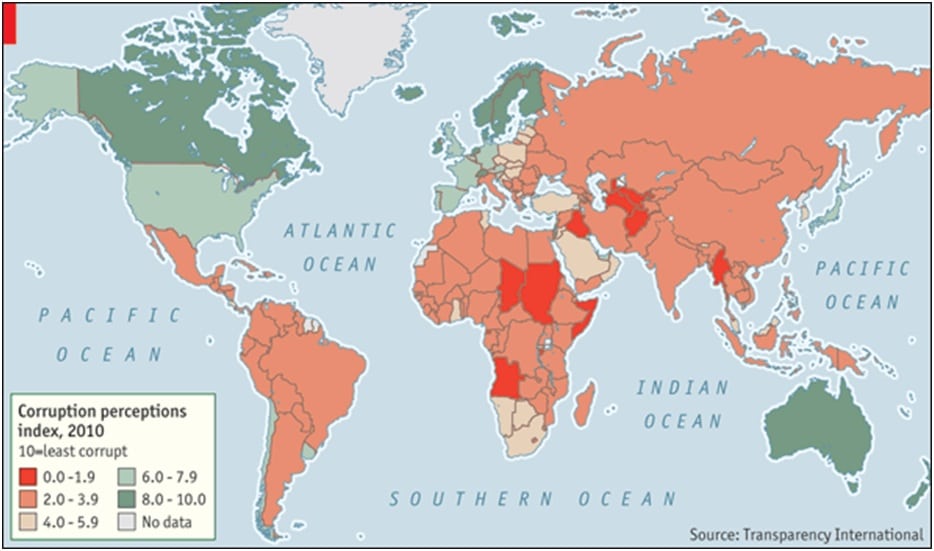
Liu Zhijun—China’s minister in charge of building the high-speed railway—was fired in Feb. 2011 on corruption charges. He was accused of skimming off as much as 1 billion yuan ($152m) in bribes and of keeping as many as 18 mistresses. Separately, state auditors reported that $28m had been embezzled from the 1,300km high-speed line between Beijing and Shanghai, the highest-profile of China’s many rail projects.
[ The Economist “Off the rails?” March 31, 2011 ]
China spends five times more on wining and dining local-government officials than it does on educating children up to 16, according to the China Youth Daily, an organ of the Communist Youth League.
[ The Economist “A work in progress” March 17, 2011]


 7:41 AM
7:41 AM
 militer
militer

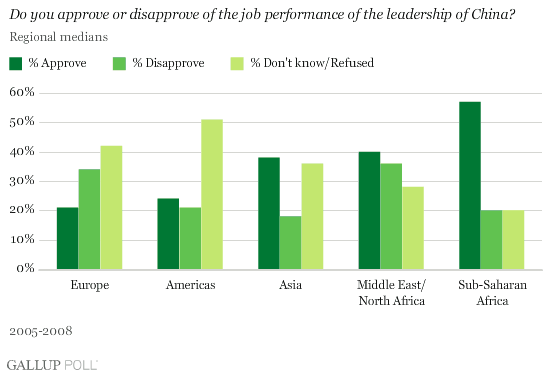
0 comments:
Post a Comment